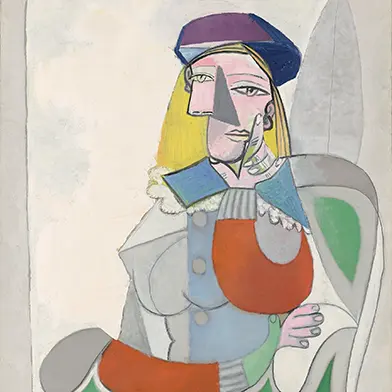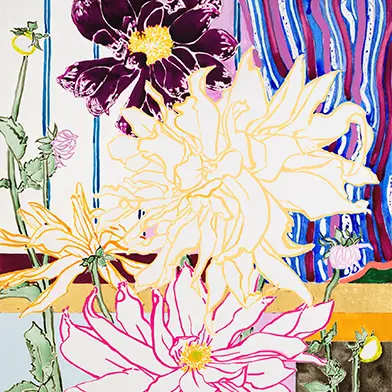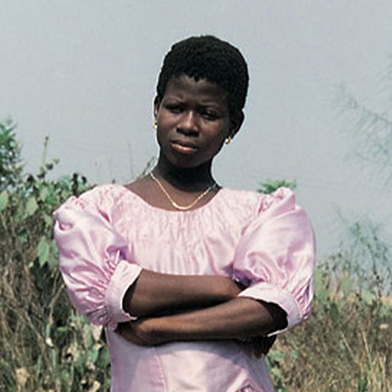Nancy Graves achieved critical acclaim in New York in the late 1960s. In 1969, at the age of 29, she became the youngest artist to be featured in an exhibition at the Whitney Museum of American Art, where she debuted her renowned wax, polyurethane, and fur Camels installation. At this time, she gained prominence as a post-Minimalist sculptor for her innovative use of materials. In the following decades, Graves continued to reference the real world, conducting in depth research as a basis for her practice.
Born in Massachusetts, Graves grew up going to the Berkshire Museum, where she was exposed to artifacts, maps, zoology and taxidermied animals that were presented alongside fine art. She graduated from Vassar College in 1961 before earning her MFA in painting from Yale University, where she studied under Alex Katz and alongside classmates Chuck Close, Brice Marden, and Richard Serra. After graduating in 1964, she received a Fulbright scholarship to study in Paris and then traveled to Italy, where she first developed her sculptural language. While in Florence, Graves was introduced to sculptor Clemente Susini’s wax anatomical models, renowned for vivid and realistic depictions of partially dissected corpses. This encounter prompted Graves to investigate the liminal space between art and science.
In the 1970s, Graves’ large-scale paintings translated her wide- ranging interests in disciplines such as anthropology, paleontology, and scientific observation into intricate compositions that embraced pointillism. In Indian Ocean Floor, I (1972), she drew upon bathymetric recordings of the ocean floor by satellites that revealed previously unknown topographies on our own planet. Graves’ detailed renderings of this data recontextualize the map as a site where abstraction and representation overlap. In Camouflage Series #4 (1971), she was inspired by images of fish camouflaging themselves against the ocean floor. Graves’ rendering of information raises questions about the authenticity and legibility of scientific sources.
Expanding her painterly practice, her black-ground paintings depict void-like backgrounds overlaid with brightly colored illustrations. In these abstractly composed works, she layered archaeological artifacts—such as prehistoric cave markings, mythological busts, maps of burial sites—and technological advances—such as satellite imaging, NASA photography, and circuit boards. In Discoid-Foliate (1982), she depicted an early circuit board in yellow paint. In Archaeo (1982), Graves pulled from a range of references: in pink, the outline of wolves hand- painted in the Lascaux cave in France; in green, the profile of the Nefertiti bust from Tell el-Amarna in the collection of the Berlin Museum and, on the bottom right, rendered in bright yellow, a 1950s diagram that recorded saccadic eye movements when observing the same bust. Sourcing motifs from antiquity to modern technology, she alluded to a convergence of time in which past and present are intrinsically interconnected.
In the 1980s, Graves' work combined painting and sculpture in an ongoing exploration of movement. She began producing gestural watercolors, inspired largely by her study of Matisse in France. Each artwork was completed in a single eight-hour long sitting, utilizing a wet-on-wet watercolor technique that required an immediacy similar to a performance. Her interest in kinetic movement inspired a collaboration with Trisha Brown Dance Company in 1985, for which she designed sets and costumes for the critically acclaimed “Lateral Pass” performance. From the mid-1980s onward, Graves began attaching protruding aluminum elements, which extended her pictorial motifs and brushstrokes, creating pieces that hovered between two mediums.
Finally, the exhibition will present a suite of sculptures made using the ancient lost-wax technique of cire perdue. Graves became one of the first contemporary artists to experiment with bronze casting, whereby she organized cast bronze objects, typically food and plants, into asymmetrical sculptures that addressed notions of balance and space.
Graves’ varied interests led her to explore fields not strictly tied to the realm of art, generating work that sought out new languages of expression. Combining her use of unconventional materials with a keen eye for formal artistic composition, Graves' practice has constantly defied categorization while staying relevant through time.
Nancy Graves has been featured in notable museums worldwide such as the Brooklyn Museum, New York; Hirshhorn Museum, Washington, D.C.; National Gallery of Canada, Ontario; Museum of Modern Art, New York; Fort Worth Art Museum, Texas; among many others. Her work is in the permanent collections of a number of prominent museums worldwide, including The Metropolitan Museum of Art, New York; Museum of Modern Art, New York; Solomon R. Guggenheim Museum, New York; The Whitney Museum of American Art, New York; Los Angeles County Museum of Art; Art Institute of Chicago; Museum of Contemporary Art, Los Angeles; Philadelphia Museum of Art; San Francisco Museum of Modern Art; Smithsonian American Art Museum, Washington, DC; Walker Art Center, Minneapolis; Museum Ludwig, Germany; Centre Pompidou, France.
all images © the gallery and the artist(s)


